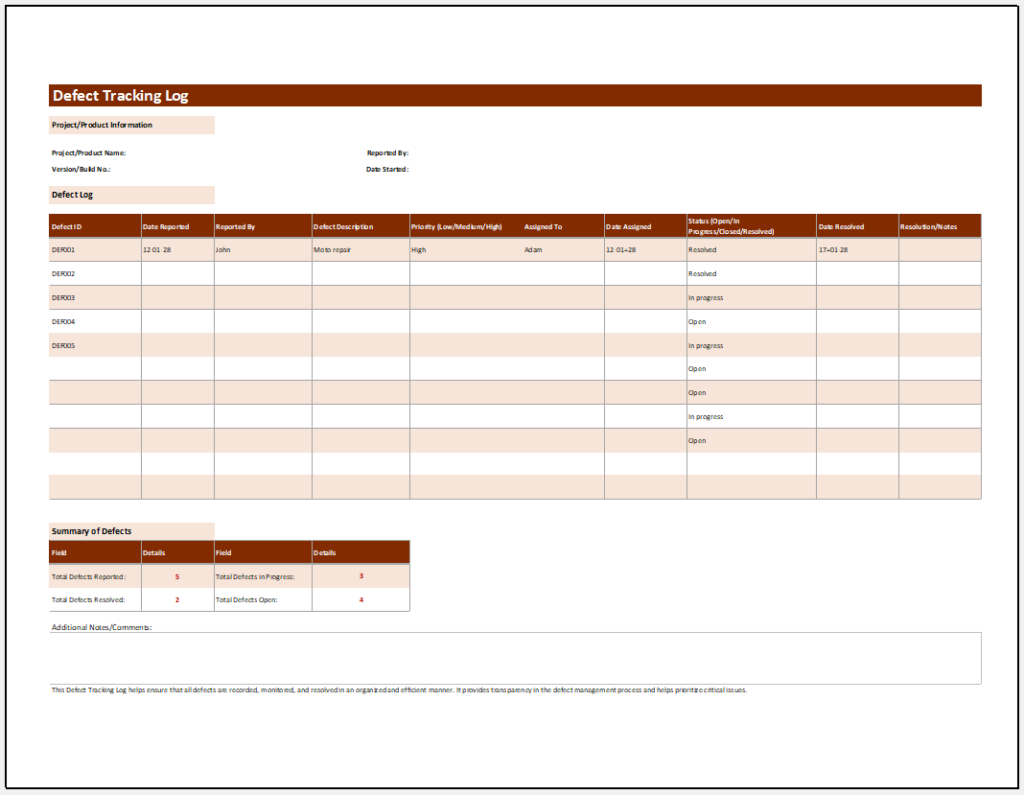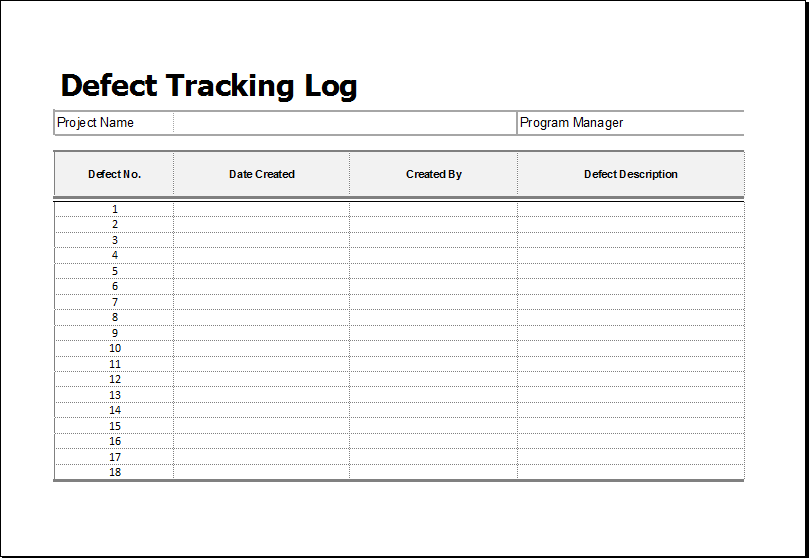Defect Tracking Log
It is essential for any business to make the best products in the market and satisfy its customers and clients. However, the products or merchandise they sell often come out defective; this isn’t because the business intended it to be like this, but somehow, due to machinery or human error, this happened.
It is the job of a business or an organization to ensure that it has tracked all the defects from the start of the supply chain to the end so that no defective piece goes into the hands of the customer. If this happens, a business may lose the customer that it tried so hard to get. For this, an organization keeps a defect tracking log.
Defect tracking is one vital process in many companies that want to stay updated about defects in their products and make products that can fix those defects.
Information about defects is obtained after thoroughly examining and testing the product, as well as from customer feedback.
Usually, the software engineering field tracks the software’s defects after delivering it to the customer. If any bug is seen in the software, the company removes those bugs by giving updates.
In a large company, tracking defects is difficult since it requires software to be inspected, tested, and investigated. The tracking process becomes complex when the number of defects to be analysed increases. A defect tracking log can be used to track those defects.
The purpose of the log is to facilitate defect management. The log never lets the company forget about any defect. Every defect is considered, and then a possible solution is recommended by the company.
A defect tracking log enables a business to maintain the details of the defective piece or product. Since many companies don’t have the time to make the log from scratch, they use a template; this template contains various columns and rows in which the details regarding the product (such as the product ID, colour, date and time of manufacture, place of manufacture, etc.) are mentioned along with the details about the defect that has been noticed (such as the exact defect, what caused it, who saw it, when was it caught, etc.).
Many organizations fail to mention essential details in the log, such as to whom the log must be submitted. Without this detail, the whole purpose of the log is moot.
A business maintains a defect tracking log to record every detail related to defects in the product. This log usually provides valuable information to a business and ensures that it has remembered all the defects and intends to fix them.
The log is usually prepared in MS Excel format. It includes the name of the person managing the defects, lists of defects, a unique defect ID, the name of the person who created the product with a defect, a description of the product, and detailed defects.
The defects can be arranged in the log based on the priority assigned to each defect. Priority is given to each defect according to its severity. If the defect is minor, you can keep it on the list.
A template for a defect tracking log can be used to save you time. This template is effective for those who often forget to fix many defects and get negative feedback.
Download your file below. File Size: 31 KB
- Product Sales Tracker Template
- Debit Memo Template for Excel
- Winter Attire Inventory
- Financial Projections Worksheet
- Employee Absence Tracker
- Weekly Sales Report Template
- Budget Vs Actual Statement
- Remote Work Attendance Tracker
- Mileage Expense Report Template
- Fitness Calendar Template
- Project Gantt Chart
- Daily Attendance Tracker for an Individual Employee
- Overtime Hours Tracker Template
- Vacation and Leave Tracker Template
- Departmental Expense Report Template
← Previous Article
Decision Log TemplateNext Article →
Employee Holiday/Sickness Schedule


Leave a Reply